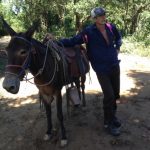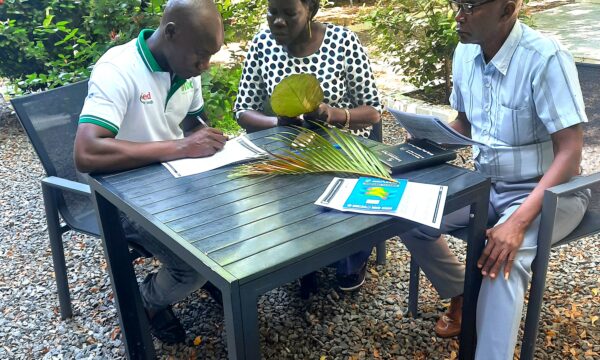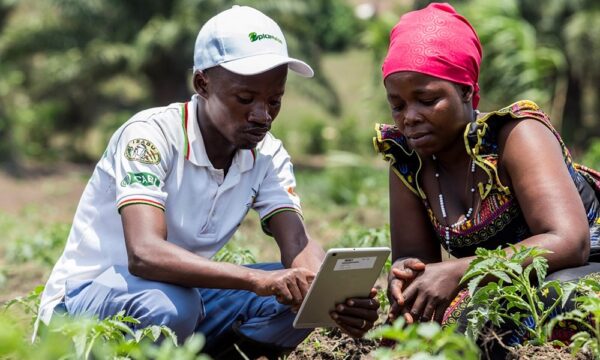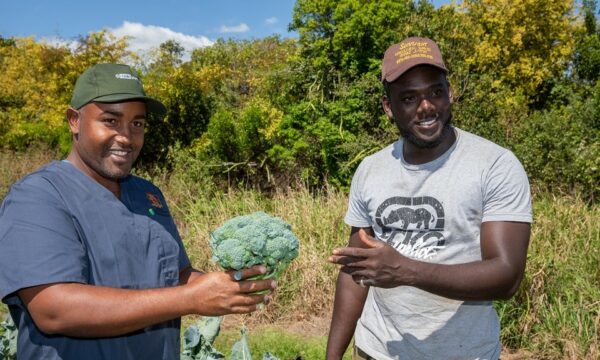By Solveig Danielsen, Luis Medina, Patricia Castillo and Eduardo Hidalgo

Sesame, the main economic crop in Achuapa
Sesame is a crop of great socioeconomic importance for smallholder farmers of the pacific region of Nicaragua. Since the early 90s, the Juan Francisco Paz Silva Cooperative has produced sesame oil, mainly for export to the United States, England and Japan.
Recognizing the importance of good plant health management of the crop, the cooperative established a plant clinic in 2009 in collaboration with CABI and the national Plant Health Network (Red Académica de Fitoprotección, REDAF). By offering a space where farmers can consult on the health of their crops, the plant clinic helps to reduce the problem of low access to technical assistance in the area.
In recent years, the plant clinic has been integrated into the package of standard services offered by the cooperative to its members. The plant doctor’s salary is paid by the income generated from sesame. Technical assistance is not only offered through the clinic, but also through field visits, plant health rallies, flyers and sometimes through the radio. These services, which are free of charge, reach more than 500 farmers from nearby communities. Of these, 280 are directly associated with the cooperative.
“The plant clinic is an auxiliary to the plant,” says Brígido Sosa, Secretary of the Board, in a meeting with the leaders of the cooperative. “Israel [the plant doctor] has done a good job. The farmers trust him.”
A small study carried out recently confirms that regular plant health advisory is necessary. The farmers interviewed said that plant health problems are a great challenge and if they are not handled properly, production is affected, sometimes severely. Emilio López de Los Tololos thinks that the situation is getting worse: “There are diseases that develop year by year. We do not know them.”
William Castillo from the community Playones has taken samples to the plant doctor several times, including new diseases. He is worried about the ‘wrinkling’, a new disease. “It is now the second year that I’m seeing it,” he says. “These pests are really discouraging. They can even make you want to quit growing the crop,” he concludes.
Almost all the interviewed farmers reported that they managed to stop the spread of pests and diseases and maintain yield levels by applying the recommendations given by the plant doctor. Only one farmer reported yield performance below the normal level. Wilt caused by Ralstonia is the disease that currently causes most trouble.
Chemical control tends to be the farmers’ preferred control option. The plant doctor Ing. Israel confesses that it is difficult to change the culture of spraying chemicals. In some cases it is because of habit, convenience, or lack of resources, since some cultural practices require more labour. In other cases it is due to lack of knowledge of the harmful consequences or to shortage of alternative products.
The leaders of the cooperative are convinced that the plant clinic generates tangible value for the cooperative. The technical advice has helped the farmers to maintain production. Although yields naturally vary from year to year for several reasons, farmers have managed to maintain the sesame yields at a higher level compared to the 2009-2010 cycle, with an annual difference of between 7% and 26%. To what extent this is due to the plant clinic cannot be concluded with certainty from this study. However, the leaders of the cooperative say that they feel ‘protected’ by the plant clinic and the support of UNAN León (Universidad Nacional Autónoma de Nicaragua, León).
José María Pérez, President of the cooperative, explains that the plant clinic helps to lower the costs. “Before they recommended products without having a secure diagnosis, like doctors who give medicine for any pain without knowing what it is.”
Mr. Sosa summarizes what the plant clinic means for the cooperative: “It is not a cost. It is a blessing. The benefit of having a place to turn to when there is a problem is indispensable, including the support of the laboratory of UNAN León. The clinic will always be there.”
Despite the good results achieved so far, much remains to be done. The dependency on chemical pesticides is very entrenched among farmers. “Sometimes the problems are due to the very use of agrochemicals,” Mr. Sosa says. “It is a challenge to raise the spirit for agro-ecological work. The agrochemical companies are right there to sell their chemicals.”
Mr. Pérez affirms that they want to rescue agriculture and continue to educate themselves. “The plant clinic helps train farmers to continue learning and improving agro-ecological management.”
The full case study is available here (in Spanish)
Related News & Blogs
Plant clinics showcased at Harvest Money Expo in Uganda to help empower the country’s young smallholder farmers
The CABI-led PlantwisePlus programme showcased its plant clinics at the Harvest Money Expo in Uganda to help empower the country’s young smallholder farmers to grow more and lose less to potentially devastating crop pests and diseases. The Harvest Mone…
22 March 2024






